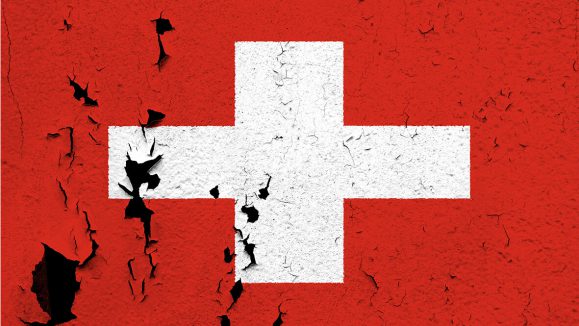[Editor’s Note: Links are clickable in this article to video interviews with ophthalmologists at APVRS.]
We took to the streets at APVRS 2022 in Taipei to gauge sentiment on the stunning new aflibercept 8 mg data from the PULSAR and PHOTON trials.
The constant ebb and flow of new drug announcements is a rhythmic lullaby for hardworking ophthalmologists the world over. Between full patient books, CME requirements and a relentless docket of surgeries and consultations, ophthalmologists can be forgiven for not staying up on the near-constant stream of novel pharmaceuticals hitting the market.
The efficacy and safety profile of aflibercept (Eylea, Bayer) 2 mg dosing is already a popular anti-VEGF treatment regimen worldwide for wet or neovascular age-related macular degeneration (nAMD) and diabetic macular edema (DME). But its beefier 8 mg big brother officially crashed onto the scene with the astonishing new data released from the PULSAR
(nAMD) and PHOTON (DME) trials at the Retina Society’s 55th Annual Meeting in Pasadena, California, on November 3 and 4, 2022.
Fast forward to the 15th Congress of the Asia-Pacific Vitreo-retina Society (APVRS 2022) in Taipei, Taiwan. Being one of the year’s larger eye care conferences, a plucky never-say-die team of Media MICErs was naturally on the scene to cover all the juiciest vitreoretinal happenings of the conference. And with one of the biggest drug announcements of the year in the PULSAR and PHOTON results for aflibercept 8 mg just weeks earlier, our team was out among the people getting candid reactions from conference-goers.
Starting High and Dry
Treatment of nAMD and DME always starts with locking the disease down by loading up on the drug in the initial phase of treatment. And before we can even begin to think about the sustained disease control that aflibercept 8 mg promises down the line, the retina must be left high and very dry, so to speak.
The quadrupled dosage and its effect on retinal dryness was one of the hottest topics on the sidelines of APVRS 2022, and many doctors like world-renowned retinal specialist Prof. Gemmy Cheung of Singapore National Eye Centre (SNEC) weighed in. “Most of our previous clinical trials have five or even six loading doses on a monthly basis. Whereas in PHOTON, it is the first time we see a DME trial requiring only three initial monthly loading doses before the patients can go into the extended phase,” she noted. “I think these are going to be highly clinically relevant study results.”
All Aboard the Sustain Train
By and large, the modern human is not known to sit around all day waiting patiently for another doctor’s appointment. Whether at work or play, patients want to keep the next needle full of medicine to the eye far out of sight and mind. This rings especially true for elderly patients who might have trouble getting around, or for diabetic patients whose lives are spent in the company of a host of different doctors keeping them healthy.
The concept of sustained disease control – maintaining a dry retina and excellent best corrected visual acuity (BCVA) – without constant trips to the clinic is thus a critical consideration for the treatments of these diseases. And the results show that Bayer (Leverkusen, Germany) is onto something here with aflibercept 8 mg – as more than 83% and 93% of patients were able to maintain dosing intervals of greater than 12 weeks in the PULSAR and PHOTON trials, respectively.
Dr. Elizabeth Livingstone of the Sydney Eye Clinic pointed out some of the unique problems that short intervals present in her home country. “One of the problems we have in Australia is that patients have relatives in other parts of the world, and they don’t want to visit them [the relatives] for just two weeks. They want to visit for six or 12 weeks and this really messes up their treatment,” she explained. “And I’ve got quite a few of those patients that have lost a line every year because they go away and don’t come back.”
Aflibercept 8 mg to the rescue, it seems then, with patients who have difficulty maintaining compliance. Dr. Harvey Uy, the Medical Director of the Peregrine Eye and Laser Institute in Manila, Philippines, seems to think so. “I think the new results of the PULSAR and PHOTON studies where 8 mg of aflibercept can result in increased treatment intervals is very good news for patients and clinics,” he started. “For patients, there’s the potential that they don’t have to come very often to the clinic to get their shots. And for clinicians, this will greatly decrease the treatment burden for doctors as well as their office staff.”
Safety First
The main concern of all doctors involved was undoubtedly safety. After all, there is more of a foreign substance being injected into the eye, and the body isn’t known to be accommodating to foreign substances, or needles in the eye.
Prof. Cheung was initially a little skeptical about the safety profile, and with one thing in particular. “The immediate worry is – does it increase the intraocular pressure?” But having seen the study results, the concern dissipated. “That was specifically looked at in the trial. And the proportion of patients with increased IOP was very low and comparable with the 2 mg arms. That’s great to know,” she concluded.
Dr. Livingstone echoed these sentiments. “I would worry that it might increase the risk of systemic effects, because there’s a greater amount of substance in the eye,” she said. But just like Dr. Cheung, the PULSAR and PHOTON results seemed to quell these concerns. “They said there hasn’t been a reported increased risk, so it looks like it hasn’t been shown.”
For Dr. Brijesh Jakkar, Consultant Ophthalmologist at LV Prasad Eye Institute, India, a proven safety profile even opens up a potential new world of possibilities for treatment. “Every medicine you take, the physician can decide the dose,” Dr. Jakkar reflected. “We have been doing this all along as doctors… Now that we know that [aflibercept 8 mg] is safe, that is the key. We can decide the dose,” he continued.
For Dr. Jakkar, deciding the dose may go a long way in saving sight for a wider range of patients and diseases. “What we are learning every day is that diseases like PCV, they require much higher doses. Some patients may not respond at a lower dose, those are patients that might respond at a higher dose.”
Of course, the wondrous prospect of extending intervals was not lost on Dr. Jakkar, either. “The other catch is that with a higher dose, the dosing can be extended to a point that the patient actually becomes very comfortable,” he concluded. And with all the good things going for aflibercept 8 mg, doctors from around the world are looking very comfortable indeed with the prospect of adding a new weapon to the arsenal in the fight against nAMD and DME.
Editor’s Note: The 15th Congress of the Asia-Pacific Vitreo-retina Society (APVRS 2022) was held on 18-20 November in Taipei, Taiwan. Reporting for this story took place during the event. A version of this article was first published in PIE Magazine Issue 24X: Posterior Segment Special Report.



